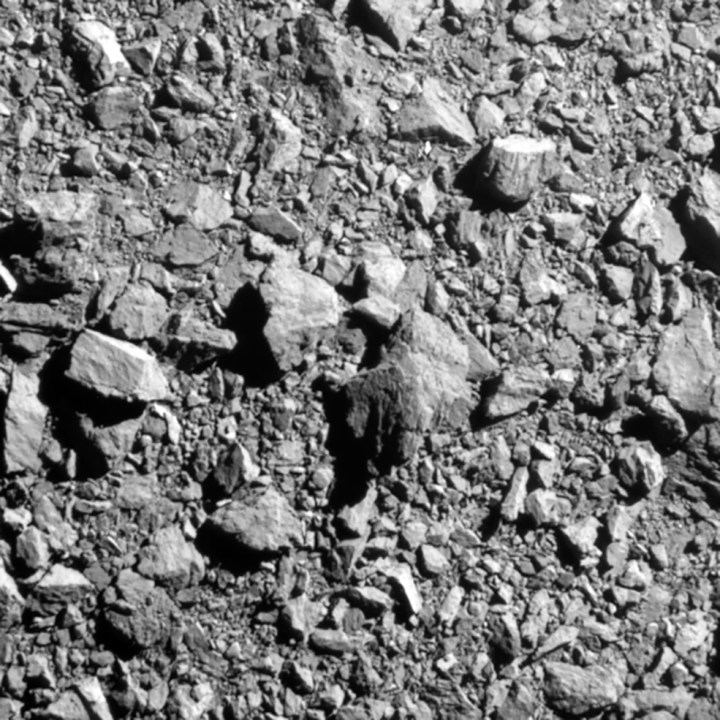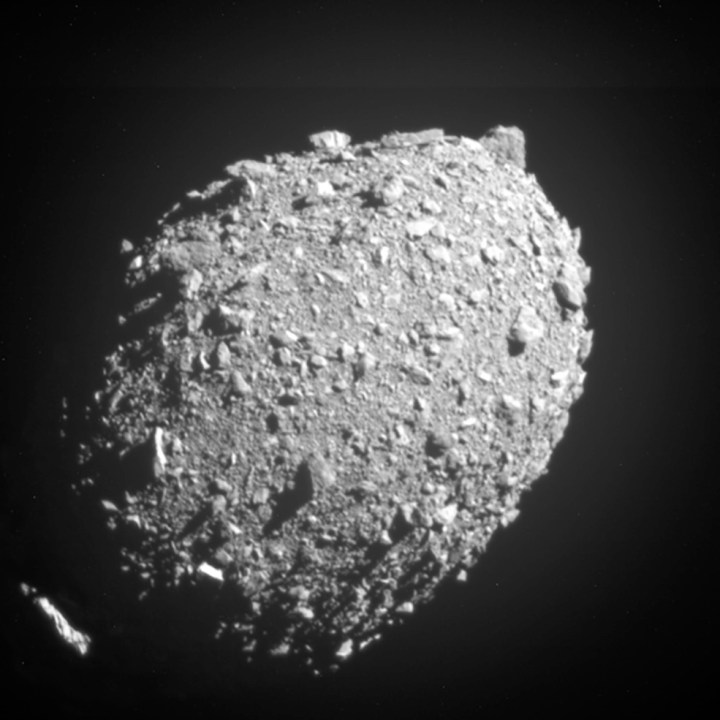NASA’s Double Asteroid Redirection Test (DART) spacecraft crashed into a distant asteroid on Monday in a mission designed to see if the force of such an impact can shift a space rock’s direction of travel.
If it worked — and we may not find out for a couple of months — then we will have a way of deflecting hazardous asteroids spotted heading toward Earth. And when you consider what happened to the dinosaurs, that would be very good news indeed.
Thanks to the marvels of modern technology, earthlings were able to tune into NASA’s online stream on Monday to watch the spacecraft smash into the asteroid in near real time. Incredible stuff considering the event was happening around 7 million miles from Earth.
DART’s Didymos Reconnaissance and Asteroid Camera for Optical navigation (DRACO) provided the feed. Traveling toward the asteroid at a relative speed of 14,000 mph, the 525-feet-wide (160 meters) Dimorphos asteroid for a long time appeared as a tiny dot in the video, but then rapidly became larger in the frame in the seconds prior to impact. When the feed cut out and the screen turned black, everyone at Mission Control broke into applause and cheers — surely a first for a video link suddenly cutting out like that.
Aware that some folks might be interested in those final images before impact, NASA shared a post on Tuesday telling us more about them.
In the first one we see the asteroid Didymos (bottom left) and its moonlet, Dimorphos, about 2.5 minutes prior to impact. The image was taken by DRACO from a distance of about 570 miles (920 kilometers).

The next image shows DART having made good progress toward the asteroid, with astonishing details now becoming visible. NASA notes how Dimorphos is “full of boulders of various sizes,” adding that the asteroid appears to lack “the fine-grained regolith, or loose, dust-rich outer material, that is seen on Earth’s moon and on other asteroids.”
Below is the last complete image of Dimorphos, captured from a distance of about 7 miles (12 kilometers) just 2 seconds before impact. According to NASA, the image shows a patch of the asteroid 100 feet (31 meters) across.

Below is DRACO’s final glimpse of Dimorphos before the DART spacecraft slams into the rock at high speed. The image was captured at up to 4 miles (6 kilometers) from the asteroid’s surface and just 1 second before impact.
“DART’s impact occurred during transmission of the image to Earth, resulting in a partial picture,” NASA said, adding that it shows a patch of the asteroid that’s 51 feet (16 meters) across.

DART’s mission team is now gathering data from ground-based observatories in an effort to see if the impact had any effect on the asteroid’s trajectory, and if so, to what extent. We’ll be sure to report any developments just as soon as they come in.



